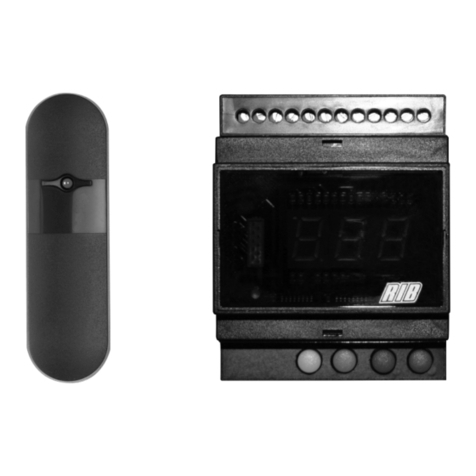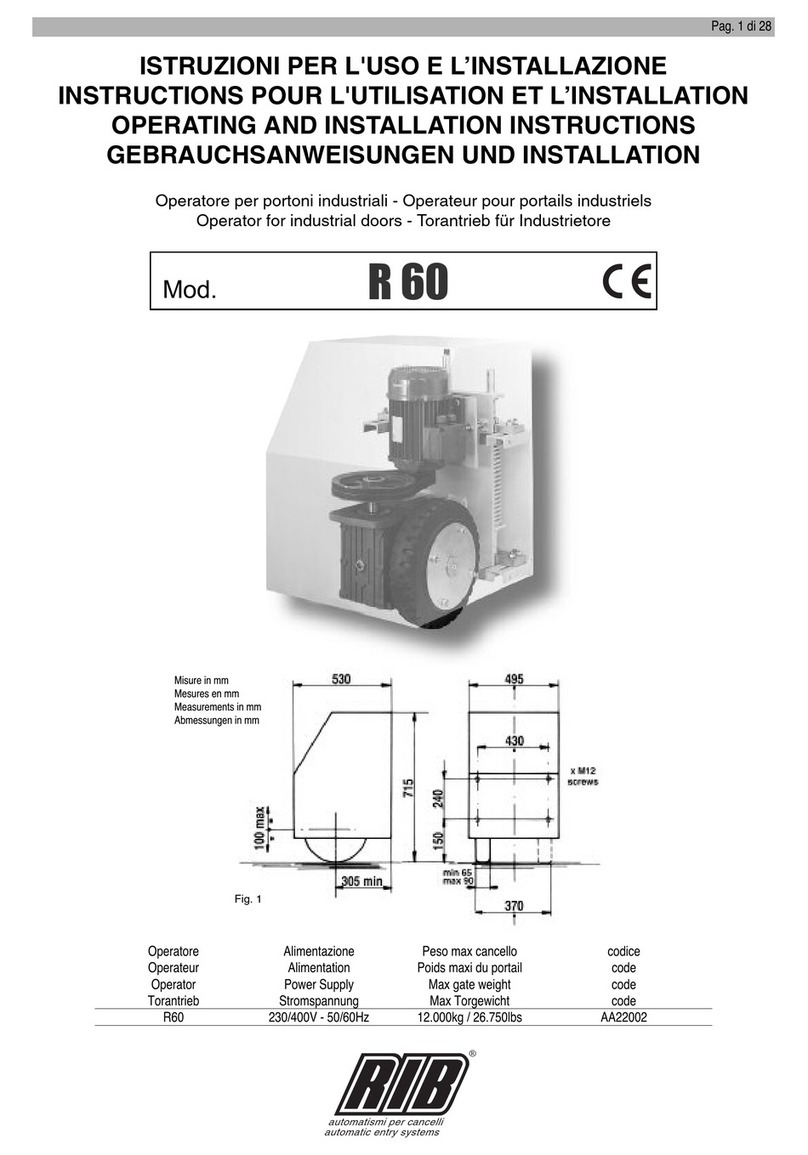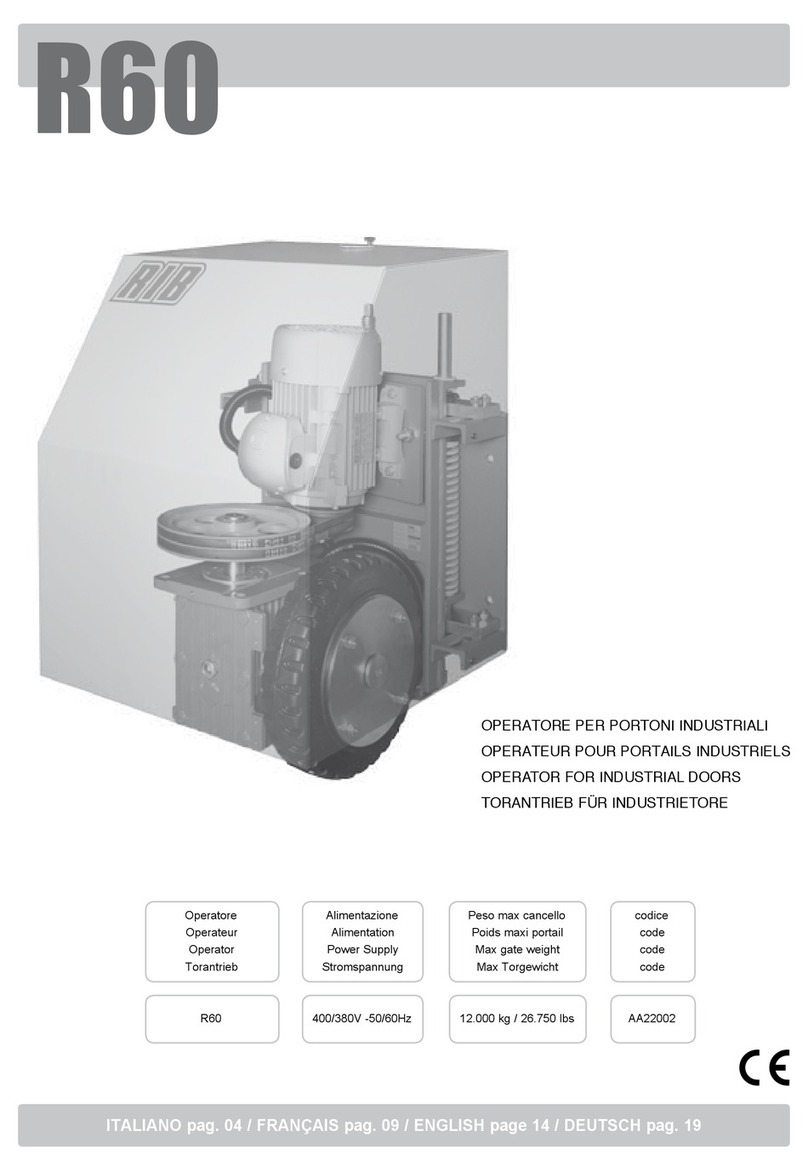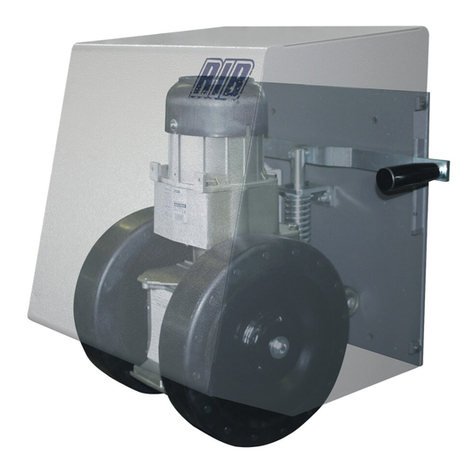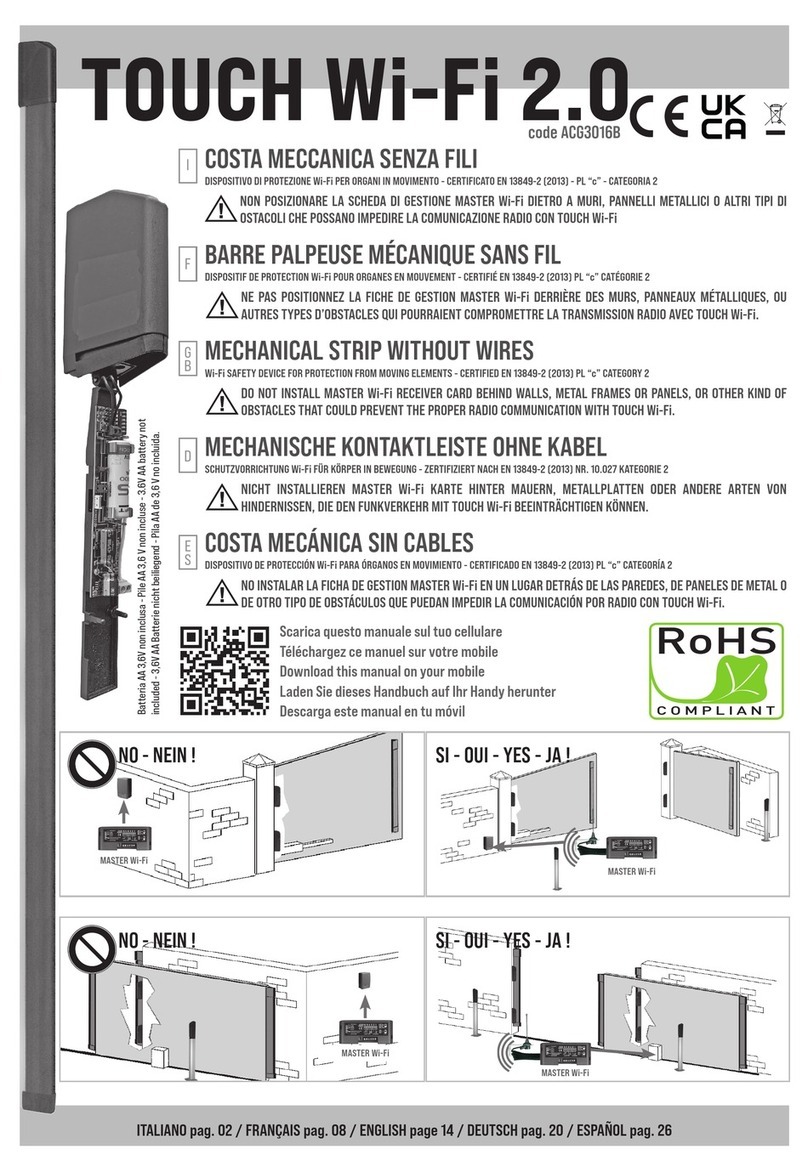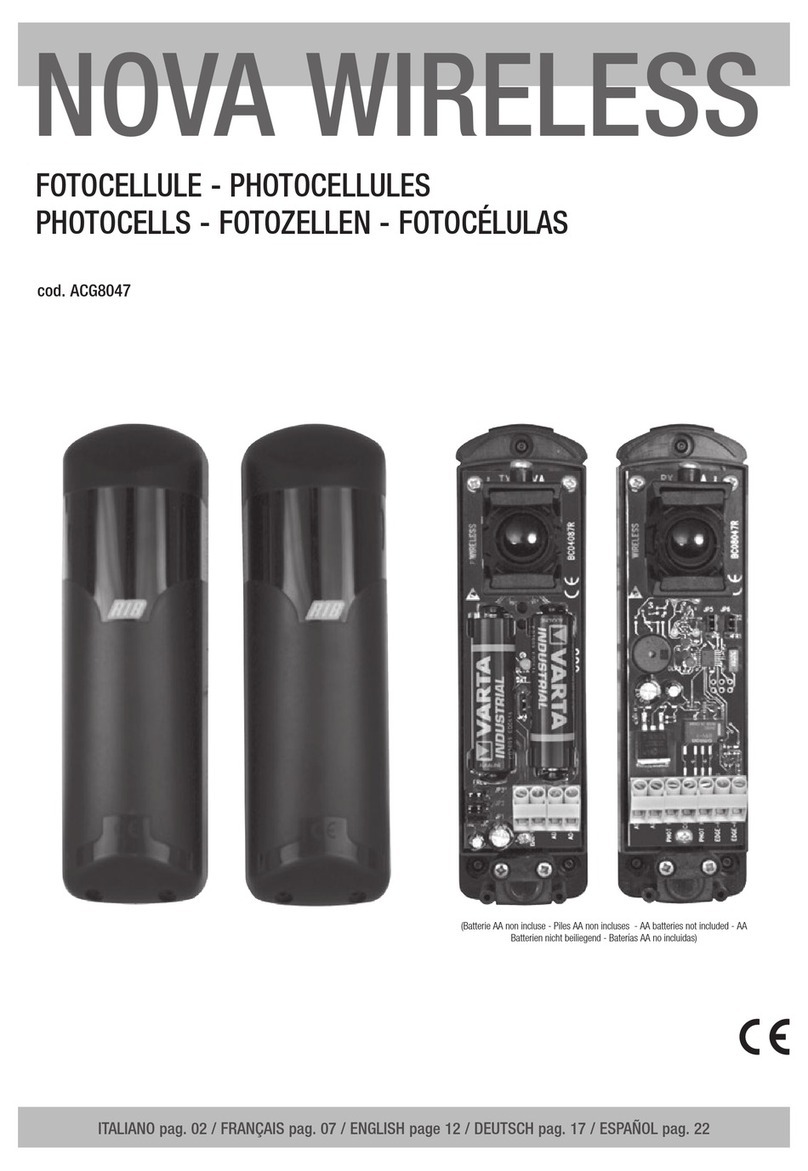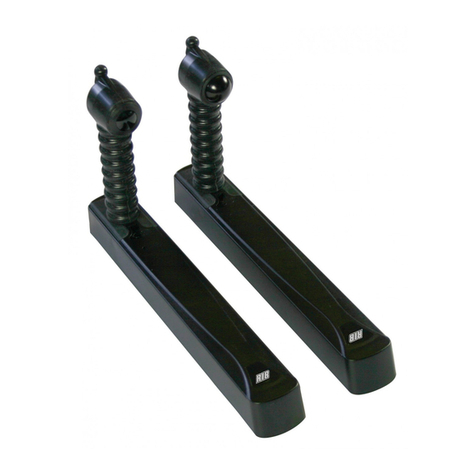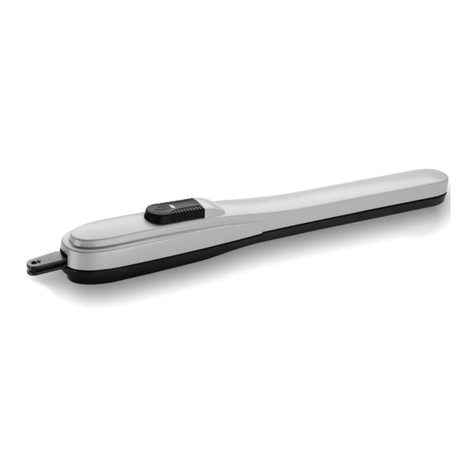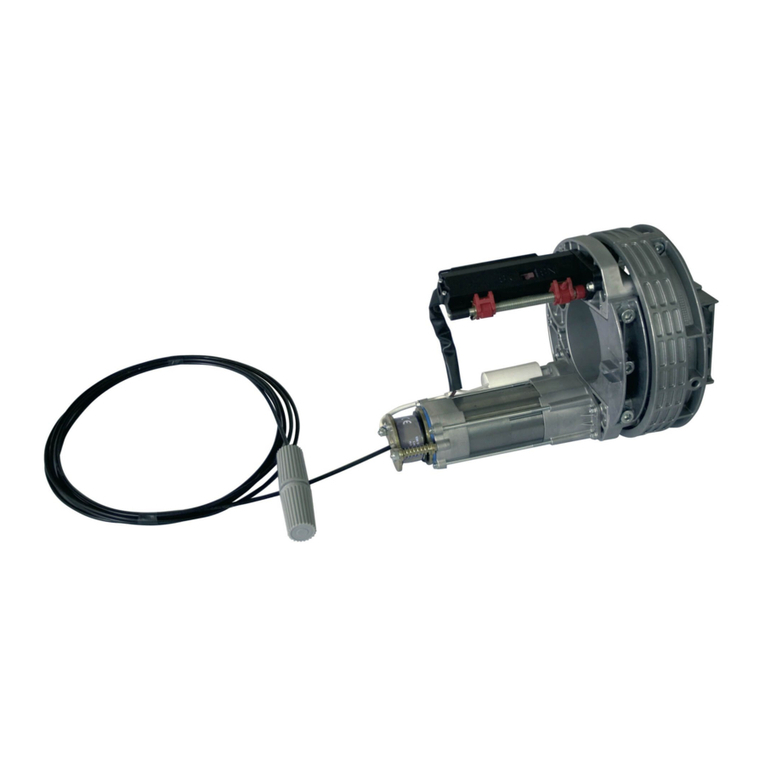
7
I
PER MEMORIZZARE ALTRE TOUCH Wi-Fi
- Premere il tasto PROG. TX di TOUCH Wi-Fi con microinterruttore 2 su ON => su MASTER
Wi-Fi il led bicolore EDGE PHOT 2 da rosso lampeggiante diventa verde lampeggiante e un
tono di buzzer segnala la corretta memorizzazione di TOUCH Wi-Fi .
- Eseguire la stessa procedura per eventuali altre TOUCH Wi-Fi (fino ad un massimo di 6).
VERIFICA DEL CORRETTO FUNZIONAMENTO
Terminata la procedura di memorizzazione, verificare il corretto funzionamento tra TOUCH
Wi-Fi e MASTER Wi-Fi nel seguente modo:
- Verificare che premendo la costa TOUCH Wi-Fi con dip 1 ON, il corrispondente led bicolore
EDGE PHOT 1 sulla scheda MASTER Wi-Fi si accenda di colore verde per la durata della
pressione.
Anche il led DL2 si spegnerà indicando l’avvenuta interruzione del contatto dedicato
all’ingresso EDGE sul quadro di comando del motore.
- Ripetere la verifica per tutte le TOUCH Wi-Fi installate.
Eseguire una verifica funzionale di tutte le TOUCH Wi-Fi installate attivando la movimentazione
dell’automazione e controllando che all’impatto con la costa l’automazione fermi/inverta il
movimento.
IN CASO DI DIFFICOLTA’
SINTOMO VERIFICA
La costa non funziona Verificate lo stato delle batterie e del contatto
PER ALTRE INFORMAZIONI FATE RIFERIMENTO AL LIBRETTO ISTRUZIONI DELLA SCHEDA MASTER Wi-Fi
CARATTERISTICHE TECNICHE ELETTRONICHE
TOUCH Wi-Fi è certificata EN13849-2 2008 - ref. n. 10.027 - categoria 2
FREQUENZA 868,3 MHz
SENSIBILITA’ -108 dBm
POTENZA DI EMISSIONE <25 mW
ALIMENTAZIONE batterie 3 x AA 1,5 V (> 2,7 Ah)
ASSORBIMENTO A RIPOSO 25 µA
ASSORBIMENTO MASSIMO 13 mA
TIPO DI MODULAZIONE FSK
PORTATA 20 m in spazio libero senza antenna
VITA DELLA/E BATTERIE 3 anni (tipo AA)
PORTATA DEI CONTATTI 0,5 A - 24 V c.a. c.c.
TEMPERATURA DI LAVORO -20°C ÷ +60°C
GRADO DI PROTEZIONE IP44
GRADO DI UMIDITÀ RELATIVA <93%
CARATTERISTICHE TECNICHE MECCANICHE
CORSA DAL CONTATTO ALL’INTERVENTO (PRECORSA) max 15 mm
CORSA DALL’INTERVENTO ALLA BATTUTA MECCANICA (EXTRACORSA) min. 40 mm
TEMPO DI APERTURA DEI CONTATTI DALL’INTERVENTO max 0,1 s
TEMPO DI RECUPERO DALLA DEFORMAZIONE MASSIMA max 0,5 s
FORZA MASSIMA APPLICABILE AL DISPOSITIVO max 1 KN
MASSIMA VELOCITÀ DEL DISPOSITIVO IN MOVIMENTO max 0,25 m/s *
* L’utilizzo con operatori con velocità superiore a 0,25 m/s (15 m/min) determina un mancato rispetto
della normativa in vigore.
MANUTENZIONE PERIODICA
Deve essere effettuata solo da personale autorizzato in accordo con le regole di sicurezza e
con le istruzioni del fabbricante, con frequenza semestrale.
- La costa TOUCH Wi-Fi deve essere mantenuta in condizioni di lavoro efficienti e in accordo
con le istruzioni del fabbricante.
- Sostituire le batterie quando richiesto dal sistema (si veda tabella “in caso di difficoltà” su
manuale MASTER Wi-Fi).
- Verificare la presenza e la leggibilità della marcatura iniziale.
- Le parti usurabili sono segnalate nella tabella ”Tipologia di articoli per l’assemblaggio”;
eventuali sostituzioni devono essere eseguite da tecnico abilitato seguendo le istruzioni di
montaggio e verifica.
1 - Verificare che i coperchi (superiore e inferiore) e il supporto in alluminio siano integri e
non deformati; verificare che la parte in gomma sia integra e non lacerata.
2 - Smontare il coperchio.
3 - Controllare il cavo di acciaio che sia integro e non sfilacciato; sostituire il cavo in caso
contrario.
4 - Controllare che, in condizioni di riposo, la leva sia posizionata sul finecorsa centrale. In
caso contrario regolare la posizione agendo sulla vite di regolazione.
5 - Controllare l’integrità del coperchio superiore e sostituirlo se danneggiato.
6 - Verificare che non siano presenti tracce di umidità o corpi estranei e rimuoverli in caso
contrario.
7 - Tenendo premuto il contatto del finecorsa centrale, premere la gomma e controllare che
il circuito elettrico venga interrotto.
8 - Rilasciare il bordo di gomma e controllare che il contatto elettrico si ripristini.
9 - Rimontare il coperchio.
OPTIONAL
BATTERIE ALCALINE AA BATTERIE LITHIO AA
4 X 1,5V - con TOUCH Wi-Fi durata batterie 3 anni.
cod. ACG9519
2 X 1,5V - con TOUCH Wi-Fi durata batterie 4 anni (prendere 2 pezzi).
Per temperature estreme -40÷+60°C. cod. ACG9509












